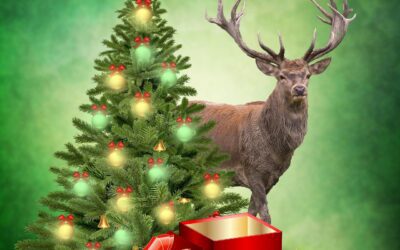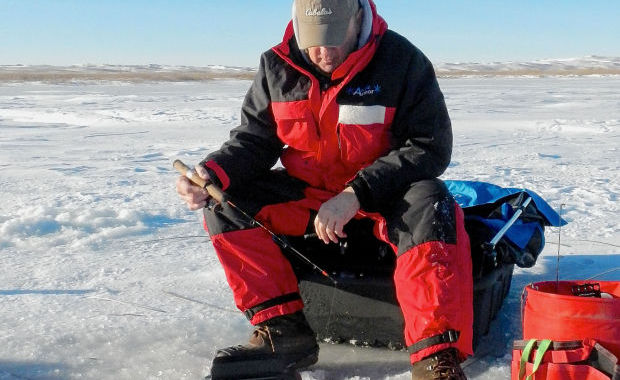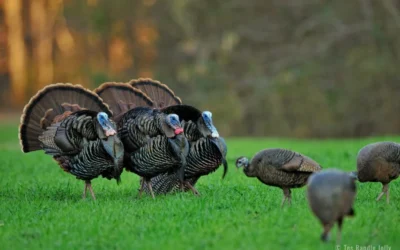There are several things that are critical when it come to a healthy deer herd and bucks with larger racks. These things include, the age of the buck, genetics, mineral intake and nutrition.
The most important thing needed for the deer in your hunting area to develop larger racks, is genetics. If you do not have good genetics, you may be out of luck, unless some new deer with better genetics move into your area you may be stuck with basket and abnormally racked deer.
There really are only a couple of these things you can do to help a buck develop larger racks and they are:
a. Let the smaller bucks pass: You and your neighbors will need to pass on smaller deer, allowing them to live another year or two
b. You can reduce the poor quality deer, to cull those deer, which are not adding to the quality of the herd.
c. Increase the deer’s mineral intake: In some areas, deer will find all the minerals they need in the ground, while in others, some minerals are not available in the deer’s home range.
My neighbors and I have been adding supplements for years and have noticed the improvement in overall deer health as well as the size of their racks. We add a mineral supplement to the deer’s diet, giving them any of the minerals they may be lacking in their home range. The RAKS we put out is available to the deer and if they need it, they will tear up the ground we had worked into the ground, if they do not need it they simply paw at it.
There are certain times of the year deer hit our RAKS mineral licks hard; these are when the bucks are developing their racks and when the does are pregnant
On other thing you can do is to improve their nutrition and this is where food plots come in.
In most of deer home range, during certain parts of the year, there is plenty of food. Except during harsh winters and if you happen to have a food plot, the deer will find it and use it to get them through the tough times.
There are some, including myself who in the past have feed deer during the winter.
Now, studies in several states indicate, “if you care, let them fend for themselves”.
Despite concern for wild deer, some folks may be doing more harm than good and may be killing deer with kindness.
Just before the Rut, in September and October deer will increase their food intake, increasing fat accumulation by as much as twenty to thirty per cent. This fat reserve provides nutrition over the winter and what else is needed can be met with the limited natural browse and with the deer decreasing their metabolic rate their food requirements are reduced to about one-half of what is needed in the summer.
There are several changes going on for deer in the late fall as this is also the time when they grow their winter coat. The winter coat with its hollow guard hairs provides insulation while the under fur provides warmth, helping them to retain body heat, reducing their energy demands. Because of this fat reserve, deer in relatively good condition can fast for several weeks without harmful effects.
Several studies in Maine, Pennsylvania and other states indicated that during winter months, the microorganisms in the deer’s stomach are different from those in spring, summer and fall. This change allows deer to digest a diet of woody browse during winter months when other food sources are unavailable. These microorganisms turn the high-fiber diet into proteins other feed then woody browse requires different microorganisms in the stomach for the deer to digest it properly.
Just because a deer eats, the food provided by us in winter does not mean that it is good for them.
It is not always a lack of food being the biggest factor impacting winter survival of deer, there are several including, the severity of the winter, and the condition of the deer coming out of the rut and going into the winter and softwood cover in the winter.
These studies indicate in most cases supplemental feeding does not reduce deer losses during winter and in some cases actually increases losses.
During the winter, deer reduce their food intake; no matter how much there is, relying on fat reserves for up to forty per cent of their nutritional needs.
Deer will Yard-up” gather in large herds in the winter, helping them to keep their winter, trails open, allowing them to get to their food source and to make escape easier from predators.
There are several undesirable impacts from winter feeding including: the feeding concentrates the deer in smaller areas, reducing the size and effectiveness of their trails. It concentrates deer in smaller areas, which can make it easier for predators to hunt them.
When you concentrate deer in smaller areas, it may increase the likelihood they will pass on disease to other deer such as Chronic Wasting Disease and EHD.
With too many deer in a smaller area, deer may over graze the area, affecting re-growth, reducing its ability to shelter deer in the future.
Feeding deer may cause the deer’s behavior to change where they become less afraid of people. If feeding sites are near homes, deer are at greater risk of dog attacks. These feeding sites, concentrating deer can also increase deer/vehicle accidents.
Depending on what is being fed, deer may actually starve when fed supplemental foods during winter if they have a full belly of food they can t digest; many deer have starved to death with stomachs packed full of hay. The ingesting of spoiled or moldy feed can be fatal to deer
In the winter, deer compete aggressively for scarce, high-quality foods and only the strongest, most dominant deer (who would have survived the winter anyway) gain access to food, while deer most vulnerable to starvation in winter (usually fawns) are denied access to supplemental feed by deer that are more aggressive.
If you decide to feed deer:
* Locate deer feeding sites in or near deer wintering areas
* Establish your deer feeding sites 1/2 mile or more from plowed roads to minimize road-kill losses.
* Don’t just put feed in one spot distribute feed in several locations, every day helping not to concentrate the deer in one location.
* Begin feeding in late December or after there have been 12 inches of snow pack (whichever comes first) when deer have likely transitioned to their wintering areas.
* If possible feed natural browse such as; soft woods, with oats or acorns given as diet supplements.
* If you have to feed artificial feed, consider:
* Deer require up to three weeks to adjust to new foods, so deer should not be overfed
* Feeds with high sugar content should be introduced in early December, if later than
that introduce it slowly or rapid death can occur
* Deer feed should not contain proteins from animals rendered into feed;
What not to feed:
* Hay, corn, potatoes, or cabbage/lettuce trimmings;
* Use complete horse, dairy, or deer formulation in pellet form
* Feed should be protected from moisture elevated on a platform off the ground to prevent
mold, which can be fatal;
*Once a feeding program starts, do not interrupt or terminate it until spring greenery emerges
The information in this column will give you some idea as to the advantages and disadvantages of feeding wild game as well as information on mineral supplements.






0 Comments